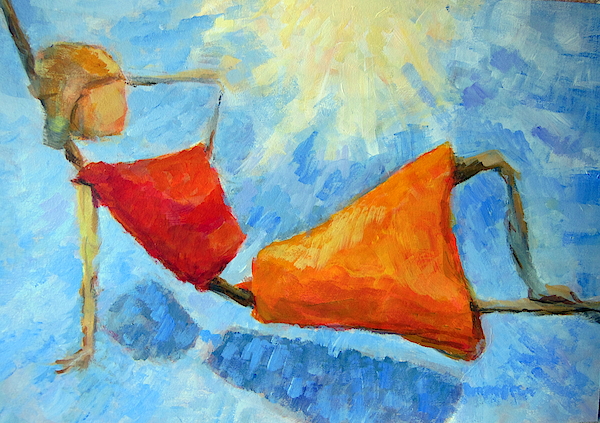Paul Klee: He made pictures using the ideas of Einstein and Freud
Paul Klee is a Swiss painter of German origin. Klee, who first learned orientalism, was influential in many movements such as expressionism, cubism and surrealism with his unique style.

The artist had a lot of experience in color theory and wrote about those experiences. His works reflected the painter's childlike perspective, sense of humor, personal feelings, beliefs and musicality. Klee and his Russian painter friend Wassily Kandinsky were also famous for teaching at the Bauhaus school.
Expressionist, Surrealist Painter Paul Klee was born in 1879 in Münchenbuchsee, near Bern, Switzerland. He was born as the second child of a musician family. He took an interest in music in the early years of his life and took violin lessons at the Municipal Music School between 1886 and 1890. However, later his interest began to shift from music to the visual arts.
Despite his family's objections, he began teaching in Heinrich Knirr's studio in 1898. Although he was very successful in his drawings, he started to have problems with color. In 1901 he went on a trip to Italy with his friend Hermann Haller. They toured Rome, Florence and Naples and studied the paintings of past masters. On his return to Italy, he stayed with his family for a while and engaged in music. Meanwhile, he developed his anatomy studies.
In 1911, he met Alfred Kubin, followed by August Macke and Wassily Kandinsky. After a while, they formed the group Der Blaue Reiter together. However, the turning point of his art came when he visited Tunis with August Macke and Louis Moilliet. The painter was very impressed with the quality of the light there. He wrote: “Color has taken possession of me. As soon as I stopped chasing him, I knew he would have me forever. Color and I are one. I am a painter.” After this stage, he added his technical success to his success in the use of color and made a series called "Dramatic Paintings" in which he combined these two.
In the first half of the 1930s, Klee was at the height of his career. In the late 1930s, he visited Kandinsky and Picasso. During this period he mostly used geometric forms with heavy lines and larger blocks of colour. The color palette, on the other hand, ranged from bright colors to matte colors. The reason for this change most likely reflected his mood swings between optimism and pessimism. Returning to Germany in 1937, the painter's seventeen paintings were shown in the "Degenerate Art" exhibition organized by the Nazis, and 102 of his works were destroyed by the Nazis.
Although he is an artist whose paintings are difficult to classify, he has been associated with movements such as Expressionism, Cubism, Futurism, Surrealism and Abstract art in different periods. The painter, who generally worked separately from his contemporaries, interpreted new art movements from his own perspective. His methods and techniques were unusually inventive.
Paul Klee died on June 29, 1940. His body was cremated at his will. The following words are written on the tombstone in Bern. “I cannot be grasped in the here and now. For my dwelling place is as much among the dead as the yet unborn. Slightly closer to the heart of creation than usual. But not nearly close enough”
PAUL KLEE’S EPITAPH, THE MEANING
https://ngravitystudio.wordpress.com/2013/03/26/paul-klees-epitaph-the-meaning/
